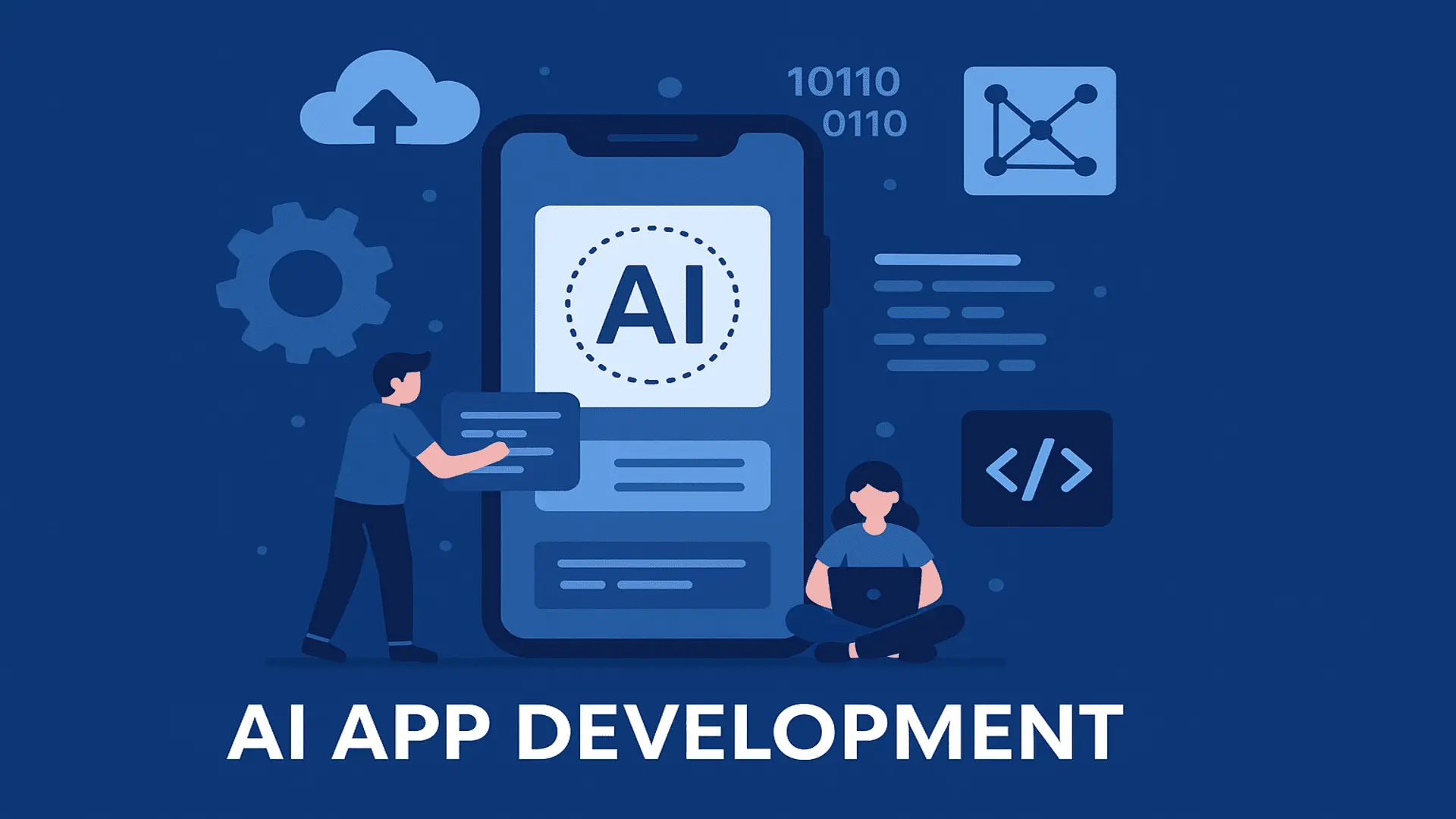Machine Learning in Software Development: Transformative Impact

Welcome to the world of Machine Learning. In this blog post, we delve into the dynamic landscape of modern software development, where Machine Learning (ML) stands as a transformative force. From revolutionizing development processes to enhancing user experiences, ML’s integration has reshaped traditional paradigms and opened new avenues of innovation. Join us as we explore the significance of ML, its key applications, challenges, future trends, and discover why Cloudester Software is at the forefront of this technological evolution.
Machine learning (ML) has emerged as a transformative force in the realm of software development, enabling computers to learn and adapt from data without explicit programming. This capability not only streamlines traditional development processes but also introduces new possibilities for innovation across various industries. In this comprehensive guide, we unravel the multifaceted impact of ML on modern software development, exploring its applications, challenges, best practices, and future trends.
Unraveling Machine Learning in Software Development
Machine learning, a subset of artificial intelligence (AI), fundamentally changes how software is designed, developed, and deployed. Unlike traditional software development approaches that rely on predefined rules and instructions, ML algorithms learn from vast datasets, identify patterns, and make data-driven predictions. This adaptive capability is particularly valuable in handling complex problems that traditional algorithms struggle to address effectively.
The Evolution of Machine Learning in Software Development
Historically, software development focused on deterministic algorithms that followed predefined rules. However, as software systems grew in complexity and data availability surged, there arose a need for more sophisticated approaches to handle uncertainty and variability. ML provided a breakthrough by enabling systems to learn from data iteratively, improving accuracy and performance over time.
ML Across the Software Development Lifecycle
ML’s impact spans the entire software development lifecycle, influencing key stages from ideation to deployment:
- Conceptualization and Design: ML algorithms aid in conceptualizing software solutions by analyzing market trends, user preferences, and competitor strategies. Consequently, this data-driven approach enhances the feasibility and relevance of software designs.
- Development and Coding: During the coding phase, ML accelerates development by automating repetitive tasks such as code generation, debugging, and optimization. In particular, AI-driven code completion tools assist developers in writing efficient and error-free code snippets.
- Testing and Quality Assurance: ML enhances testing processes by automating test case generation, predicting potential defects, and optimizing test coverage. As a result, this automation not only speeds up testing cycles but also improves software quality by detecting vulnerabilities early in the development process.
- Deployment and Maintenance: Post-deployment, ML facilitates ongoing software maintenance by monitoring performance metrics, identifying anomalies, and suggesting performance optimizations. Notably, predictive maintenance models powered by ML algorithms help preemptively address potential issues before they escalate.
Understanding the Significance of Machine Learning in Modern Software
Businesses today are increasingly reliant on software applications to drive innovation, enhance customer experiences, and gain competitive advantage. Therefore, ML plays a pivotal role in achieving these objectives by:
Managing Increasing Complexity
Modern software applications are characterized by intricate architectures, diverse functionalities, and large-scale user bases. Therefore, ML algorithms excel in managing this complexity by optimizing resource allocation, improving scalability, and enhancing system robustness.
Meeting Personalization Demands
User expectations for personalized experiences have surged across industries, from e-commerce to healthcare and beyond. As a result, ML algorithms analyze vast amounts of user data to deliver tailored recommendations, content suggestions, and user interfaces that cater to individual preferences. Consequently, this personalized approach not only enhances user satisfaction but also fosters long-term engagement and loyalty.
Accelerating Development Cycles
The pressure to deliver software products swiftly without compromising quality is a constant challenge for development teams. Hence, ML addresses this challenge by automating labor-intensive tasks, minimizing human error, and enabling rapid prototyping and iteration. Therefore, agile development methodologies coupled with ML-powered tools streamline workflows, shorten development cycles, and expedite time-to-market for new products and features.
Key Applications of Machine Learning in Software Development
ML’s versatility is reflected in its wide-ranging applications across various facets of software development:
Code Completion and Generation
AI-driven code completion tools such as GitHub Copilot and Kite harness natural language processing (NLP) and deep learning to assist developers in writing code more efficiently. Consequently, these tools analyze context, syntax, and user patterns to generate accurate code suggestions, automate repetitive tasks, and enhance overall coding productivity.
Automated Testing
ML algorithms automate the generation of test cases based on historical data, code repositories, and user interactions. Thus, by simulating real-world scenarios and edge cases, automated testing frameworks improve test coverage, detect bugs early in the development cycle, and ensure robust software performance under diverse conditions.
Bug Detection and Prediction
ML models trained on historical bug data and code repositories predict potential software defects and vulnerabilities. Therefore, by identifying critical areas prone to errors, developers can prioritize debugging efforts, allocate resources efficiently, and maintain high standards of software reliability and security.
Performance Optimization
ML algorithms analyze system performance metrics, identify bottlenecks, and recommend optimization strategies to enhance software efficiency, responsiveness, and scalability. Hence, these insights enable development teams to fine-tune application performance, allocate resources effectively, and deliver seamless user experiences across devices and platforms.
Personalized User Interfaces
ML-powered recommendation systems and user interface (UI) personalization engines adapt interface layouts, content displays, and navigation flows based on individual user preferences, behavior patterns, and demographic data. As a result, by customizing user experiences in real time, organizations can improve usability, increase conversion rates, and foster deeper user engagement.
Challenges and Considerations in Implementing Machine Learning
While ML offers significant advantages in software development, its implementation poses several challenges that organizations must address proactively:
Data Availability and Quality
ML algorithms rely heavily on high-quality, representative data to train models effectively and make accurate predictions. Consequently, sourcing, cleaning, and curating diverse datasets that reflect real-world scenarios can be a daunting task, particularly for organizations with limited data infrastructure and resources.
Model Interpretability
Understanding how ML models arrive at specific decisions and predictions is crucial for ensuring transparency, trustworthiness, and regulatory compliance. Consequently, black-box models, which lack interpretability, pose challenges in explaining outcomes to stakeholders, debugging issues, and identifying biases that may affect model performance and fairness.
Computational Resources
Training and deploying ML models often require substantial computational resources, including high-performance hardware, cloud infrastructure, and specialized software tools. Hence, the cost and complexity associated with scaling ML operations can present barriers for smaller organizations or those operating under budget constraints.
Security Vulnerabilities
ML models are susceptible to adversarial attacks, data poisoning, and model inversion techniques that exploit vulnerabilities in training data or model architectures. Therefore, robust security measures, including data encryption, access controls, and regular security audits, are essential to mitigate risks and protect sensitive information from unauthorized access or manipulation.
Best Practices for Leveraging Machine Learning
Successful integration of ML into software development workflows hinges on adopting best practices that prioritize efficiency, reliability, and innovation:
Focus on Data Quality
Invest in data governance frameworks, data cleaning pipelines, and quality assurance processes to ensure that training datasets are accurate, representative, and free from biases. Hence, collaborate with domain experts to contextualize data inputs and validate model outputs against real-world outcomes.
Choose the Right ML Tools and Frameworks
Select ML platforms, libraries, and frameworks that align with project requirements, technical expertise, and organizational goals. Consequently, evaluate factors such as scalability, compatibility with existing infrastructure, community support, and vendor reputation when choosing tools for model development, deployment, and monitoring.
Embrace Iterative Development
Adopt agile development methodologies that facilitate continuous integration, testing, and deployment of ML models. Therefore, establish feedback loops between data scientists, developers, and end-users to iteratively refine models based on performance metrics, user feedback, and evolving business requirements.
Prioritize Model Interpretability
Implement interpretable ML algorithms and visualization techniques that provide insights into model predictions, feature importance, and decision-making processes. Consequently, enhance transparency and accountability by documenting model assumptions, limitations, and potential biases in technical documentation and regulatory disclosures.
Foster Collaboration
Promote cross-functional collaboration between data scientists, software engineers, UX designers, and business stakeholders to leverage diverse perspectives, domain expertise, and creative insights. Consequently, establish communication channels, interdisciplinary workshops, and knowledge-sharing platforms to facilitate collaborative problem-solving and innovation.
Future Trends in Machine Learning and Software Development
Looking ahead, several emerging trends are poised to reshape the landscape of ML-powered software development:
- Low-Code/No-Code ML Platforms: Democratization of ML through intuitive, user-friendly platforms that enable non-experts to build and deploy ML models without extensive programming knowledge.
- Automated ML: Advancements in automated machine learning (AutoML) tools that streamline model selection, feature engineering, hyperparameter tuning, and model deployment, accelerating time-to-insight and reducing manual intervention.
- Explainable AI (XAI): Development of interpretable ML models and explainability techniques that enhance transparency, trustworthiness, and regulatory compliance in AI-powered applications.
- Generative AI: Evolution of generative adversarial networks (GANs) and natural language processing (NLP) models that create synthetic data, generate creative content, and simulate complex scenarios for training and testing purposes.
- Integration with DevOps: Convergence of ML operations (MLOps) and DevOps practices to automate end-to-end workflows, optimize model deployment pipelines, and ensure continuous monitoring, scaling, and management of ML applications in production environments.
Why Cloudester?
At Cloudester, we specialize in integrating cutting-edge ML technologies into software development processes, empowering organizations to unlock new levels of innovation, efficiency, and competitive advantage. Hence, our team combines deep domain expertise, rigorous data science methodologies, and collaborative partnerships to deliver bespoke ML solutions tailored to your business needs.
By leveraging ML to automate routine tasks, optimize performance, and personalize user experiences, Cloudester Software enables you to stay ahead of market trends, mitigate operational risks, and drive sustainable growth in a rapidly evolving digital landscape.









